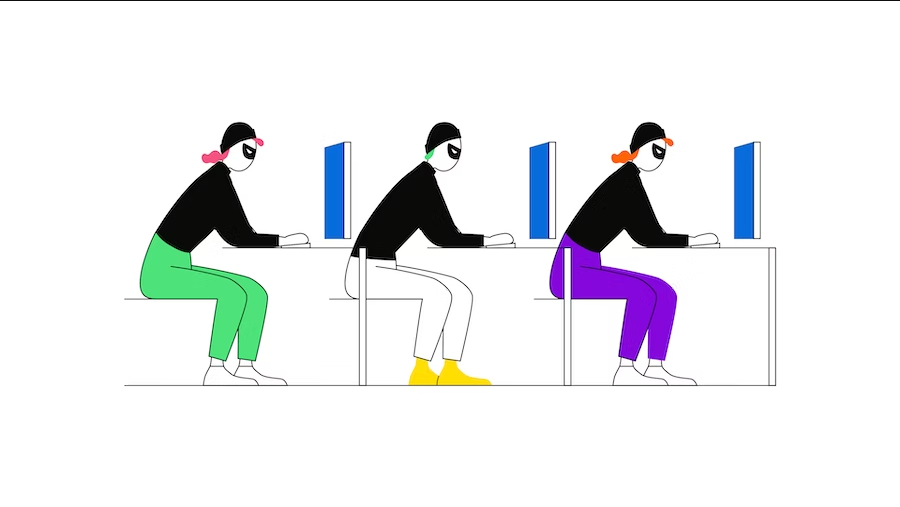Understanding the Bitcoin halving
Every four years, the Bitcoin network gives miners a bit of a cold shoulder by slicing the block reward for mining new blocks in half. This crucial event reshapes Bitcoin's economic framework by tightening supply and often enhancing demand.
Historically, these halvings have triggered substantial volatility within Bitcoin's price and have led to strategic pivots among miners and investors. As such, this cyclical event influences market dynamics and sets the stage for broader economic impacts within the crypto world, dictating the rhythm of market cycles and investor expectations.
In economics, this phenomenon is known as the ripple effect, where the action taken by one entity can, and will, affect the actions of others. This is akin to the waves created by a stone thrown into a pond - and in the case of Bitcoin, the splashes from this event can indeed turn into waves that reach the far shores of the altcoin markets.
Direct impact on altcoins
Bitcoin's gravitational pull strongly influences the altcoin market. When Bitcoin undergoes a halving, the resulting price fluctuations often prompt investors to redistribute their investments across the crypto spectrum. This reallocation can lead to both surges and dips in altcoin markets, making altcoins a compelling economic case study in reaction to Bitcoin's halvings.
Common effects of the Bitcoin halving
Volatility and valuation: Following a Bitcoin halving, altcoins tend to ride the rollercoaster of heightened volatility. Prominent projects like Ethereum and Ripple have experienced significant price fluctuations, reacting dynamically as investors and traders adjust to the new Bitcoin landscape. For instance, Ethereum’s impressive ascent from around $200 to an all-time high of over $3,500 within 12 months of the Bitcoin halving on May 11, 2020, showcases the dramatic shifts that can occur.
Altcoin performance following the Bitcoin Halving 2020 (USD)
Innovation and adaptation: Post-halving, the altcoin technological landscape often enters a phase of rapid evolution. Developers may speed up the rollout of new features or improvements, striving to secure their coin’s relevance in a market recalibrating itself after Bitcoin’s big move. Although 72 % of crypto projects have died since 2020, this wave of innovation pushes the technological boundaries, especially in enhancing transaction speeds and expanding smart contract functionalities.
Market dynamics: The redistribution of capital following a Bitcoin halving reshapes the entire crypto market, impacting everything from liquidity to trading volumes, and even the pace of new altcoin projects. For example, the Bitcoin Dominance Index shows a consistent decline in Bitcoin’s market dominance post-halving, paving the way for altcoins to capitalise on the shift and collectively enhance their market capitalisation.
Bitcoin mining, network security, and technological innovations triggered by halving
The reduction in mining rewards from the halving not only tests Bitcoin's economic resilience but may also challenge its network security. Faced with lower profitability, miners will turn off their mining rigs, thus resulting in a lower hash rate that can make the network more vulnerable to attacks. This necessitates Bitcoin and altcoin communities to fortify their systems against potential vulnerabilities, enhancing their overall security and efficiency.
As Bitcoin becomes less profitable for miners, there is a potential shift towards mining altcoins that might increase the hash rate of these networks and foster greater technological adoption and innovation within these alternative blockchain projects.
Differentiation and long-term strategic moves
Following Bitcoin's halvings, altcoins frequently redefine their strategic positions to either align more closely with or distinctly diverge from Bitcoin. This differentiation can manifest in various aspects, from adopting alternative consensus mechanisms like Proof of Stake (PoS) or Proof of Space to integrating new financial products that cater to niche markets. Other projects hold no intrinsic value at all. Still, they are on the rise nonetheless – just a year after the previous Bitcoin halving in 2020, the original Memecoin DOGE rose from a mere $ 0.002 to $ 0.65, with other projects from the realm of internet humour riding tail.
Each strategy is designed to capitalise on the market dynamics induced by Bitcoin's halvings, with altcoins aiming to either complement or counterbalance Bitcoin's market movements. And for Alt- or Memecoin alike, investor sentiment plays a decisive role in success or gainless.
Investor psychology and market sentiment
With each buildup to a halving event, the market buzz swells into a cacophony of predictions, rumours, and bets. In this atmosphere of speculative static, excitement and anxiety often go hand in hand – and as internet conversation is the driver of such commotion, concepts such as FOMO, YOLO or HODL are becoming valid investing strategies for many, underscoring the critical role of investor sentiment in shaping market outcomes.
The collective consciousness of the market, with its fear and greed index, begins to exert a gravitational pull, akin to the market forces themselves. Prices may surge or plunge not just on the economics of scarcity induced by the halving but on the waves of collective emotion.
The halving unfurls a period of profound uncertainty, where on one hand, it presents an algorithmic tightening of supply - a nod to the principles of scarcity. On the other hand, it represents a crossroads filled with what-ifs, could-bes, and maybes, capable of sending ripples of hope or tremors of panic across the market. It's in this liminal space that investment decisions can take on a dramatic quality, each buy or sell bearing the weight of possible history in the making.
The next Bitcoin halving: embracing perpetual cycles
Reflecting on the interconnected nature of Bitcoin and altcoin markets underscores the profound influence that halving events have on the broader cryptocurrency landscape. These events not only test the mettle and resilience of Bitcoin but also challenge the entire altcoin market to adapt, innovate, and evolve. While historical trends provide valuable insights, the unique circumstances of each halving event, such as current economic climates and technological advancements, suggest a cautious approach.
The future of altcoins in the context of the most recent Bitcoin halving in April 2024 remains an open question, highlighting the importance of continuous observation and adaptability. Before the next Bitcoin halving, staying informed and adaptable is crucial. Engage with in-depth analyses and expert insights from Bitpanda to navigate these cyclical events effectively and make informed decisions in the evolving crypto landscape.

David Sievers is a freelance copywriter and founder of copy.vibe, a Vienna-based network of creatives operating at the intersection of digital marketing, branding, and AI. Drawing from his rich well of experience in blockchain communications, he frequently shares his insights across a spectrum of national and international platforms.
Disclaimer
This article does not constitute investment advice, nor is it an offer or invitation to purchase any digital assets. This article is for general purposes of information only and no representation or warranty, either expressed or implied, is made as to, and no reliance should be placed on, the fairness, accuracy, completeness or correctness of this article or opinions contained herein. Investing carries risks. Make sure to conduct your own research before making any investment.
 Commodities* Invest in commodities 24/7
Commodities* Invest in commodities 24/7 BITCOIN What to know when you are just starting to invest
BITCOIN What to know when you are just starting to invest ASSET MANAGEMENT Your investment, your assets: Why your money is safe with Bitpanda
ASSET MANAGEMENT Your investment, your assets: Why your money is safe with Bitpanda COUNTDOWNBitcoin Halving Countdown 2024
COUNTDOWNBitcoin Halving Countdown 2024 ACADEMYWhat is the Bitcoin halving?
ACADEMYWhat is the Bitcoin halving?







